 W
WMesoamerican languages are the languages indigenous to the Mesoamerican cultural area, which covers southern Mexico, all of Guatemala and Belize and parts of Honduras and El Salvador and Nicaragua. The area is characterized by extensive linguistic diversity containing several hundred different languages and seven major language families. Mesoamerica is also an area of high linguistic diffusion in that long-term interaction among speakers of different languages through several millennia has resulted in the convergence of certain linguistic traits across disparate language families. The Mesoamerican sprachbund is commonly referred to as the Mesoamerican Linguistic Area.
 W
WAmuzgo is an Oto-Manguean language spoken in the Costa Chica region of the Mexican states of Guerrero and Oaxaca by about 44,000 speakers. Like other Oto-Manguean languages, Amuzgo is a tonal language. From syntactical point of view Amuzgo can be considered as an active language. The name Amuzgo is claimed to be a Nahuatl exonym but its meaning is shrouded in controversy; multiple proposals have been made, including 'moss-in'.
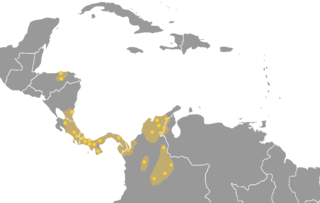 W
WThe Chibchan languages make up a language family indigenous to the Isthmo-Colombian Area, which extends from eastern Honduras to northern Colombia and includes populations of these countries as well as Nicaragua, Costa Rica, and Panama. The name is derived from the name of an extinct language called Chibcha or Muysccubun, once spoken by the people who lived on the Altiplano Cundiboyacense of which the city of Bogotá was the southern capital at the time of the Spanish Conquista. However, genetic and linguistic data now indicate that the original heart of Chibchan languages and Chibchan-speaking peoples may not have been in Colombia at all, but in the area of the Costa Rica-Panama border, where one finds the greatest variety of Chibchan languages.
 W
WChocho is a language of the Popolocan branch of the Oto-Manguean language family spoken in Mexico in the following communities of Oaxaca: Santa María Nativitas, San Juan Bautista Coixtlahuaca, San Miguel Tulancingo. Chocho is Spoken by 770 speakers.
 W
WThe Chʼoltiʼ language is an extinct Mayan language which was spoken by the Manche Chʼol people of eastern Guatemala and southern Belize. The post-colonial stage of the language is only known from a single manuscript written between 1685 and 1695 which was first studied by Daniel Garrison Brinton. Chʼoltiʼ belongs to the Choʼlan branch of the Mayan languages and is closely related to Chontal and especially Chʼortiʼ. The Chʼoltiʼ language has become of particular interest for the study of Mayan Hieroglyphs since it seems that most of the glyphic texts are written in an ancient variety of Chʼoltiʼ called Classic Chʼoltiʼan or Classic Maya by epigraphers and which is thought to have been spoken as a prestige dialect throughout the Maya area in the Classic Era.
 W
WThe Hokan language family is a hypothetical grouping of a dozen small language families that were spoken mainly in California, Arizona and Baja California. In the first half-century after the "Hokan hypothesis" was first proposed by Roland B. Dixon and Alfred L. Kroeber, and further elaborated by Edward Sapir, little additional evidence was found that these families were related to each other. But since about 1950, increased efforts to document Hokan languages and to establish sound correspondences in proposed lexical resemblance sets have added weight to the Hokan hypothesis, leading to its acceptance by many specialists in the languages of California, Oregon, and Meso-America, although some skepticism remains among scholars.
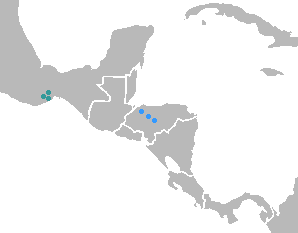 W
WJicaquean, also known as Tolan, is a small language family of Honduras. There are two attested Jicaquean languages, Tol and Western Jicaque, which Campbell (1997) reports were about as distant as English and Swedish. Only Tol survives.
 W
WKʼicheʼ, or Quiché, is a Maya language of Guatemala, spoken by the Kʼicheʼ people of the central highlands. With over a million speakers, Kʼicheʼ is the second-most widely spoken language in the country after Spanish.
 W
WLacandon is a Mayan language spoken by all of the 1,000 Lacandon people in the state of Chiapas in Mexico. Within Chiapas, Lacandon is spoken in Betel, Lacanjá San Quintín, Lake Metzaboc, Metzaboc, and Najá.
 W
WMacro-Chibchan is a proposed grouping of the languages of the Lencan, Misumalpan, and Chibchan families into a single large phylum (macrofamily). The Lencan and Misumalpan languages were once included in the Chibchan family proper, but were excluded pending further evidence as that family became well established. Kaufman (1990) finds the Chibchan–Misumalpan connection convincing, if as yet unsubstantiated, though Campbell (1997) finds it doubtful. The Xincan family was once included in Macro-Chibchan, but this is now doubtful.
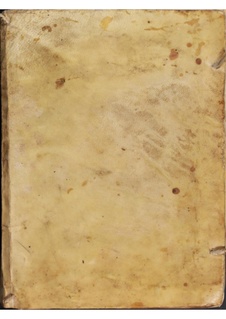 W
WThe Matlatzincan languages are two closely related Oto-Manguean language of the Oto-Pamean spoken in Central Mexico: Tlahuica/Ocuiltec and Matlatzinca. The name of the language in the language itself is pjiekak'joo.
 W
WThe Mayan languages form a language family spoken in Mesoamerica and northern Central America. Mayan languages are spoken by at least 6 million Maya people, primarily in Guatemala, Mexico, Belize and Honduras. In 1996, Guatemala formally recognized 21 Mayan languages by name, and Mexico recognizes eight within its territory.
 W
WThe Mazahua language is an Oto-Pamean language spoken in the central states of Mexico by the ethnic group that is widely known as the Mazahua but calls itself the Hñatho. It is a Mesoamerican language and has many of the traits of the Mesoamerican Linguistic Area. In 2003, along with some 62 other indigenous languages, it was recognised by a statutory law of Mexico as an official language in the Federal District and the other administrative divisions in which it is spoken, and on an equal footing with Spanish. The largest concentration of Mazahua is found in the municipality of San Felipe del Progreso, State of México, near Toluca.
 W
WMisantla Totonac, also known as Yecuatla Totonac and Southeastern Totonac, is an indigenous language of Mexico, spoken in central Veracruz in the area between Xalapa and Misantla. It belongs to the Totonacan family and is the southernmost variety of Totonac. Misantla Totonac is highly endangered, with fewer than 133 speakers, most of whom are elderly. The language has largely been replaced by Spanish.
 W
WThe Misumalpan languages are a small family of languages spoken by indigenous peoples on the east coast of Nicaragua and nearby areas. The name "Misumalpan" was devised by John Alden Mason and is composed of syllables from the names of the family's three members Miskito, Sumo languages and Matagalpan. It was first recognized by Walter Lehmann in 1920. While all the languages of the Matagalpan branch are now extinct, the Miskito and Sumu languages are alive and well: Miskito has almost 200,000 speakers and serves as a second language for speakers of other Indian languages on the Mosquito Coast. According to Hale, most speakers of Sumu also speak Miskito.
 W
WThe Mixe languages are languages of the Mixean branch of the Mixe–Zoquean language family indigenous to southern Mexico. According to a 1995 classification, there are seven of them. The four that are spoken in Oaxaca are commonly called Mixe while their two relatives spoken in Veracruz are commonly called "Popoluca", but sometimes also Mixe. This article is about the Oaxaca Mixe languages, which their speakers call Ayöök, Ayuujk, Ayüük or Ayuhk.
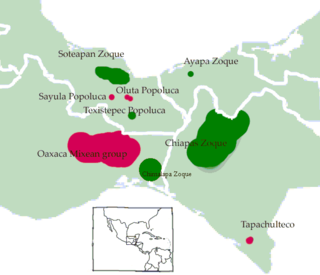 W
WThe Mixean languages are a primary branch of the Mixe–Zoquean language family of southern Mexico. According to Wichmann (1995), there are three divergent Mixean languages, and a Oaxacan branch that constitutes the bulk of the family:Oluta Popoluca (Veracruz) Sayula Popoluca (Veracruz) Tapachultec Mixe languages
 W
WThe Mixe–Zoque languages are a language family whose living members are spoken in and around the Isthmus of Tehuantepec, Mexico. The Mexican government recognizes three distinct Mixe–Zoquean languages as official: Mixe or ayook with 188,000 speakers, Zoque or o'de püt with 88,000 speakers, and the Popoluca languages of which some are Mixean and some Zoquean with 69,000 speakers. However the internal diversity in each of these groups is great and the Ethnologue counts 17 different languages, and the current classification of Mixe–Zoquean languages by Wichmann (1995) counts 12 languages and 11 dialects. Extinct languages classified as Mixe–Zoquean include Tapachultec, formerly spoken on Tapachula, along the southeast coast of Chiapas.
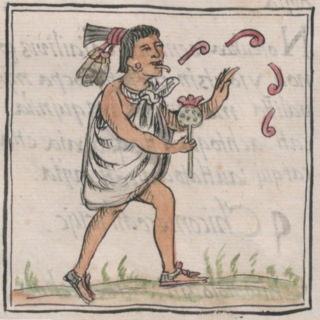 W
WNahuatl is a language or group of languages of the Uto-Aztecan language family. Varieties of Nahuatl are spoken by about 1.7 million Nahua peoples, most of whom live in Central Mexico.
 W
WNawat is a Uto-Toltec or Uto-Nahuan language native to Central America. It is the southernmost extant member of the Uto-Aztecan family. It was spoken in several parts of present-day Central America before the Spanish conquest, but now is mostly confined to western El Salvador. It has been on the verge of extinction in El Salvador and has already gone extinct elsewhere in Central America, but as of 2012 new second-language speakers are starting to appear.
 W
WThe Oto-Manguean or Otomanguean languages are a large family comprising several subfamilies of indigenous languages of the Americas. All of the Oto-Manguean languages that are now spoken are indigenous to Mexico, but the Manguean branch of the family, which is now extinct, was spoken as far south as Nicaragua and Costa Rica. Oto-Manguean is widely viewed as a proven language family. However, this status has been recently challenged.
Purépecha, often called Tarascan, is a language isolate or small language family that is spoken by 124,494 Purépecha in the highlands of Michoacán, Mexico.
 W
WSakapultek or Sacapulteco is a Mayan language very closely related to Kʼicheʼ (Quiché). It is spoken by approximately 15,000 people in Sacapulas, El Quiché department and in Guatemala City.
 W
WThe Tepecano language is an extinct indigenous language of Mexico belonging to the Uto-Aztecan language-family. It was formerly spoken by a small group of people in Azqueltán, Jalisco, a small village on the Río Bolaños in the far northern part of the state, just east of the territory of the Huichol people. Most closely related to Southern Tepehuán of the state of Durango, Tepecano was a Mesoamerican language and evinced many of the traits that define the Mesoamerican Linguistic Area. So far as is known, the last speaker of Tepecano was Lino de la Rosa, who was still living as of February 1980.
 W
WThe Tequistlatecan languages, also called Chontal of Oaxaca, are three close but distinct languages spoken or once spoken by the Chontal people of Oaxaca State, Mexico.
 W
WTlapanec, or Meꞌphaa, is an indigenous Mexican language spoken by more than 98,000 Tlapanec people in the state of Guerrero. Like other Oto-Manguean languages, it is tonal and has complex inflectional morphology. The ethnic group themselves refer to their ethnic identity and language as Me̱ꞌpha̱a̱.
 W
WTolatecan is a proposal by Campbell and Oltrogge (1980) linking two language families of Mesoamerica, Tequistlatecan and Tol/Jicaque languages of Honduras. It does not have good support.
 W
WTotozoquean is a proposed language family of Mesoamerica, originally consisting of two well-established genetic groupings, Totonacan and Mixe–Zoque. The erstwhile isolate Chitimacha was later proposed to be a member. The closest relatives of Totozoquean may be the Huavean languages.
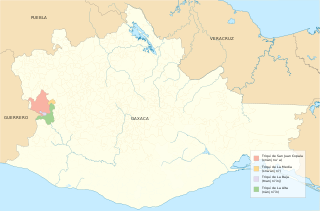 W
WThe Triqui, or Trique, languages are a family of Oto-Manguean spoken by the Trique people of the Mexican states of Oaxaca and the state of Baja California. They are also spoken by many immigrants to the United States. Triqui languages belong to the Mixtecan branch together with the Mixtec languages and Cuicatec.
 W
WTzeltal or Tseltal is a Mayan language spoken in the Mexican state of Chiapas, mostly in the municipalities of Ocosingo, Altamirano, Huixtán, Tenejapa, Yajalón, Chanal, Sitalá, Amatenango del Valle, Socoltenango, Las Rosas, Chilón, San Juan Cancuc, San Cristóbal de las Casas and Oxchuc. Tzeltal is one of many Mayan languages spoken near this eastern region of Chiapas, including Tzotzil, Chʼol, and Tojolabʼal, among others. There is also a small Tzeltal diaspora in other parts of Mexico and the United States, primarily as a result of unfavorable economic conditions in Chiapas.
 W
WTzotzil is a Maya language spoken by the indigenous Tzotzil Maya people in the Mexican state of Chiapas. Most speakers are bilingual in Spanish as a second language. In Central Chiapas, some primary schools and a secondary school are taught in Tzotzil. Tzeltal is the most closely related language to Tzotzil and together they form a Tzeltalan sub-branch of the Mayan language family. Tzeltal, Tzotzil and Chʼol are the most widely spoken languages in Chiapas besides Spanish.
 W
WUto-Aztecan, Uto-Aztekan or (rarely) Uto-Nahuatl is a family of indigenous languages of the Americas, consisting of over 30 languages. Uto-Aztecan languages are found almost entirely in the Western United States and Mexico. The name of the language family was created to show that it includes both the Ute language of Utah and the Nahuan languages of Mexico.
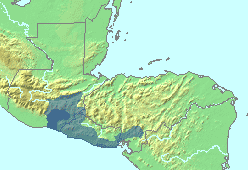 W
WXinca (Szinca) is a small extinct family of Mesoamerican languages, formerly regarded as a single language isolate, once spoken by the indigenous Xinca people in southeastern Guatemala, much of El Salvador, and parts of Honduras.
 W
WThe Zoque languages form a primary branch of the Mixe–Zoquean language family indigenous to southern Mexico. They are spoken by around 70,000 indigenous Zoque people. The Zoques call their language O'de püt.